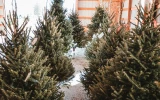11 Steps To Start a Tree Farm With No Money
There are approximately 1.7 million family forest owners in the United States alone, many of whom operate tree farms as part of their land management practices. Establishing a tree farm with limited financial resources may seem impossible, but with the right knowledge and approach, it is entirely feasible. In this guide, we will explore 11 practical steps to initiate and manage a tree farm without the need for significant initial capital.
The first step to starting a tree farm with no money is to identify the right location, and then decide the right trees to plant. You can then obtain seedlings, plant them, maintain and prune them occasionally, and get a good harvest.
Then, you can start developing a marketing strategy to sell your trees and keep track of all expenses and income related to your tree farm. You can then plan on expanding your business once it is established. Let's take a more in-depth look at each of these steps as you read through this article.
Summary
- Considering the growth cycles and harvesting times of specific species, for example, the faster maturation of pine trees compared to blue spruce, is crucial for aligning with the farm's business goals and timeline.
- A well-crafted business plan for starting a tree farm with no money helps identify the target market, competition, and unique selling proposition, as well as determine the startup costs, revenue projections, and profit margins.
- Forming an LLC is one good business structure option when establishing a tree farm because it provides you with limited liability protection in case your business faces legal issues or debt; however, it can be more pricey and complicated to set up.
- Create an online presence, develop a logo, and utilize social media and online directories to build up your tree farm's brand.

Steps in Starting a Tree Farm Without Any Initial Investment
Below is a detailed step-by-step guide on how to start a tree farm without any initial investment:
1. Secure land for planting
Look for land that is suitable for growing trees. Consider factors such as soil quality, drainage, and access to water.
Choose the right location
First, you need to consider the climate and weather patterns of the area you are considering. Trees need specific conditions to grow, and some species may not thrive in certain climates.
You also need to take into account the soil quality and the availability of water. Trees require a lot of water, so you might want to choose a location with access to a reliable water source.
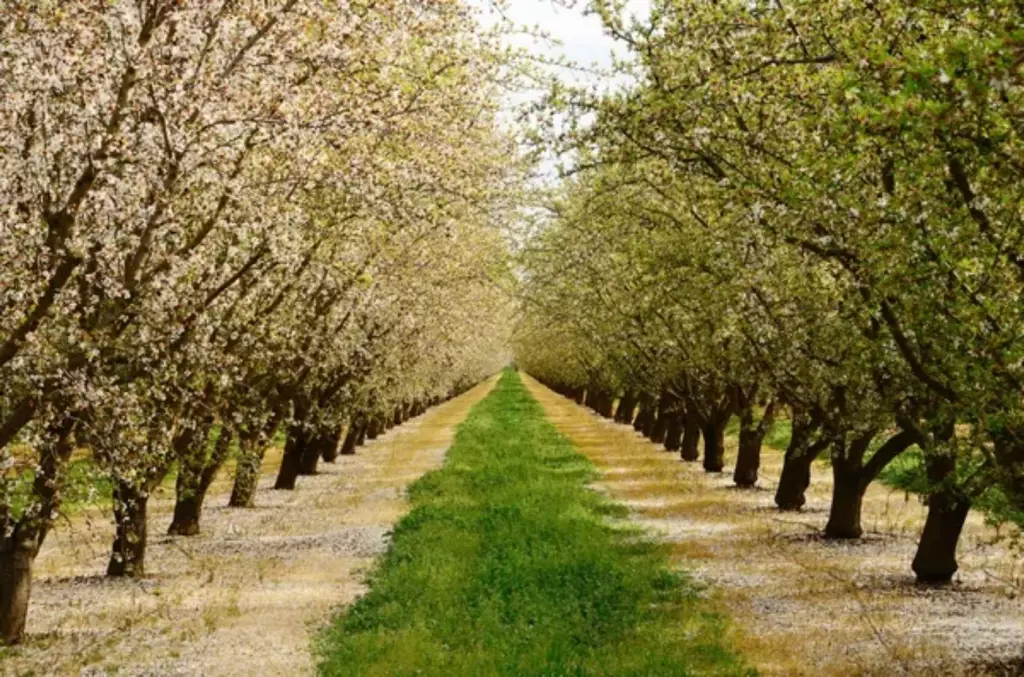
Another important factor to consider is zoning. Make sure that the land you choose is zoned for agricultural use and tree farming. To learn more tips when selecting the perfect site for your tree farm, you can go to this article.
2. Prepare the land
Once you have secured the land, it's time to start preparing it for planting:
Clear the land and prepare the soil
The first step in preparing the land for your tree farm is to clear the area of any existing vegetation, debris, rocks, or other obstacles that could interfere with tree growth.
This can be done using a variety of techniques, including manual labor, mechanical equipment, or herbicides. Once the land is cleared, you will need to prepare the soil for planting.
Next, you need to test the soil to determine its quality and nutrient content. This will help you determine which tree species will thrive in the soil and what fertilizers or soil amendments you may need to add.
You can test the soil yourself using a soil testing kit or send a sample to a soil testing lab for analysis. Common soil amendments include compost, manure, and lime.
After testing the soil, you need to prepare it for planting by tilling, adding compost or other organic matter, and leveling the land. This will create a favorable environment for tree growth and ensure the roots can establish themselves properly.
Design the layout for irrigation and planting
Once the land is cleared and the soil is prepared, you can start designing the layout for your irrigation system and planting. This involves determining the spacing and layout of your trees, as well as the placement of your irrigation system.
When designing the layout for your trees, perhaps consider the mature size of the trees and the amount of space they will need to grow.
A general rule of thumb is to plant trees at least 10-15 feet apart, depending on the species. You should also consider the slope and drainage of the land, as well as any existing structures or features that may affect the layout.
When designing your irrigation system, try to consider the water needs of your trees and the availability of water on your land.
You may need to install a well or a water storage tank to ensure that you have enough water for your trees. You should also consider the type of irrigation system you will use, such as drip irrigation or sprinklers, and the placement of your irrigation lines.
3. Select the right tree species
Starting a tree farm requires careful consideration of the type of trees you want to grow. You need to choose the right tree species that will thrive in your area and meet your business goals.
When deciding which trees to grow on your farm, perhaps consider factors such as soil type, climate, and water requirements. Different types of trees have different growth rates and require different amounts of water, sunlight, and nutrients. Some trees may be more resistant to pests and diseases than others.
Here are some examples of popular trees for tree farming and their requirements:
| Tree Type | Soil Type | Climate | Water Requirements |
|---|---|---|---|
| Fir | Well-drained | Cool and moist | Moderate |
| Pine | Well-drained | Warm and dry | Low |
| Douglas Fir | Well-drained | Cool and moist | Moderate |
| White Spruce | Well-drained | Cool and moist | High |
| Blue Spruce | Well-drained | Cool and dry | Low |
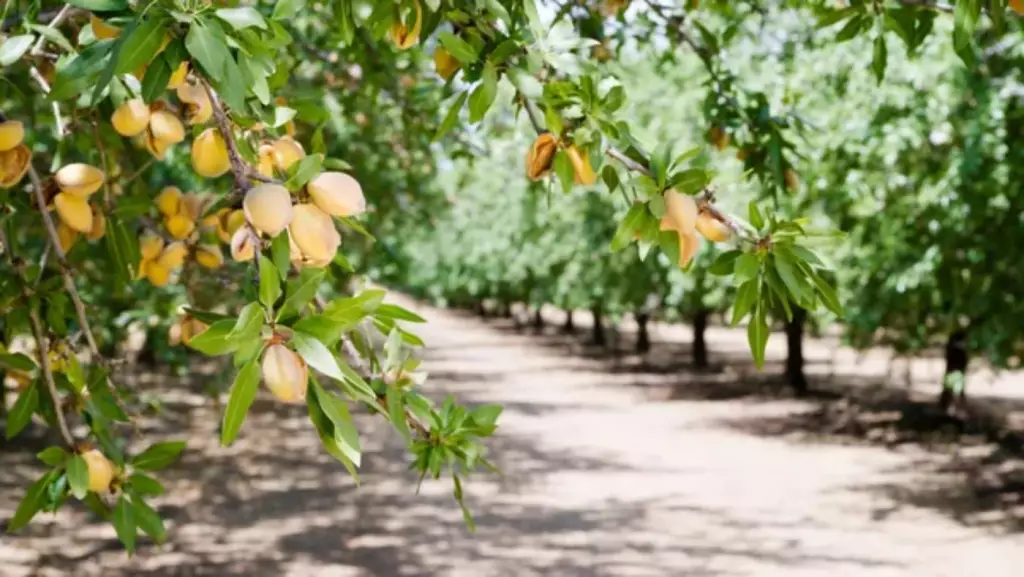
Here are some factors to consider when selecting the right tree species:
Consider the local climate and soil
Different tree species have different requirements for soil type, moisture, and temperature. You may need to choose trees that are well-suited to your local climate and soil conditions.
For example, fir, pine, and Douglas fir are common tree species that grow well in a variety of climates and soil types. White spruce and spruce are also popular tree species that can grow well in colder climates. Christmas trees are profitable tree species, with potential earnings as high as $90,000 per acre.
Understand growth cycles and harvesting times
You also need to consider the growth cycles and harvesting times of the tree species you choose. Some trees take longer to mature and produce a harvestable crop than others.
For example, blue spruce trees can take up to 10 years to reach full maturity, while other tree species like pine can be harvested in as little as 3-5 years. However, in terms of profit, an acre of the Colorado Blue Spruce has an estimated value of around $4,000 - $6,000.
You might also want to consider the time and effort required to grow and harvest each tree species and choose the ones that best fit your business goals and timeline.
Perhaps consider also the market demand for different tree species. Some tree species may be more popular and profitable than others, depending on your location and customer base.
4. Craft a strategic business plan
Starting a tree farm with no money requires a well-crafted business plan that outlines your goals, objectives, and strategies. A business plan is a vital document that helps you stay focused and on track while also attracting investors and lenders.
Importance of a business plan
A business plan helps you identify your target market, competition, and unique selling proposition. It also helps you determine your startup costs, revenue projections, and profit margins.
With a well-crafted business plan, you can make informed decisions that will help you achieve your business goals.
Key components of a tree farm business plan
A tree farm business plan should include the following key components:
-
Executive summary
The executive summary is a brief overview of your tree farm business plan. It should highlight your business goals, target market, competition, unique selling proposition, and financial projections. -
Market research
Market research is essential to understanding your target market and competition. It involves gathering information about your potential customers, their needs, and preferences. You should also research your competitors to understand their strengths and weaknesses. -
Products and services
Your tree farm business plan should clearly outline the products and services that you will offer. This includes the types of trees that you will grow, the services that you will provide, and any other products that you plan to sell. -
Marketing strategy
Your marketing strategy should outline how you plan to reach your target market. This includes your advertising, promotional, and pricing strategies. -
Financial projections
Your tree farm business plan should include financial projections that outline your startup costs, revenue projections, and profit margins. This will help you determine the amount of funding that you will need to start and sustain your business.
Startup costs include things like land, equipment, seeds, and labor. Operating costs include things like rent, utilities, insurance, and marketing.
Revenue includes income from tree sales, government grants, and other sources. You should also calculate your profit margin and break-even point.
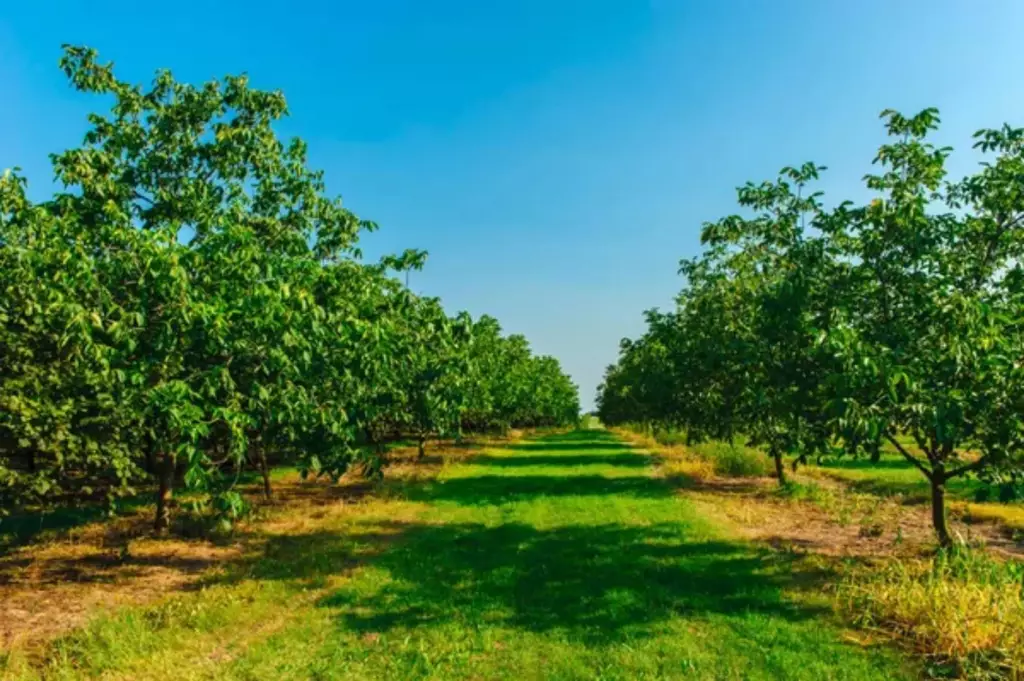
A profit margin is the percentage of revenue that is profit. A break-even point is the point at which your revenue equals your costs. Here is a table that summarizes these costs:
| Cost Type | Description |
|---|---|
| Startup Costs | Land, equipment, seeds, labor |
| Operating Costs | Rent, utilities, insurance, marketing |
| Revenue | Tree sales, government grants, other sources |
| Profit Margin | Percentage of revenue that is profit |
| Break-Even Point | Point at which revenue equals costs |
An example breakdown of cost and profit for a tree farm can be found in this article.
5. Choose a business structure
Choosing the right business structure is crucial for any business, including a tree farm. The most common business structures are sole proprietorship, partnership, and limited liability company (LLC). Each structure has its advantages and disadvantages:
-
If you're starting a tree farm with no money, you may want to consider a sole proprietorship. It's the easiest and cheapest business structure to set up, and you'll have complete control over your business. However, keep in mind that you'll be personally liable for any debts or legal issues that may arise.
-
If you're planning on starting a tree farm with a partner, a partnership may be a good option. This structure allows you to share the responsibilities and costs of the business.
-
Another option is to form an LLC. This structure provides you with limited liability protection, which means that your personal assets will be protected if your business faces legal issues or debts. However, it can be more expensive and complicated to set up than a sole proprietorship or partnership.
6. Navigate legal requirements
Starting a tree farm business comes with its own set of legal and insurance considerations. It would help if you secured your business with insurance to protect yourself from unforeseen circumstances.
You also need to obtain the necessary licenses and permits for your tree farm. These may include a business license, agricultural license, and environmental permit. You should also consider insurance and tax requirements. Here is a list of legal requirements for a tree farm:
- Business structure (sole proprietorship, partnership, LLC)
- Licenses and permits (business, agricultural, environmental)
- Insurance (property, liability, crop)
- Tax requirements (income, sales, property)
Understand zoning and permits
Before you start your tree farm, try to understand the zoning regulations in your area. Zoning regulations determine what types of businesses can operate in a certain area. You can check with your local government to find out what the zoning regulations are in your area.
In addition to zoning regulations, you may need to obtain permits to operate your tree farm. The type of permits you need will depend on the location of your farm and the types of trees you plan to grow. For example, if you plan to sell Christmas trees, you may need a permit from your local government.
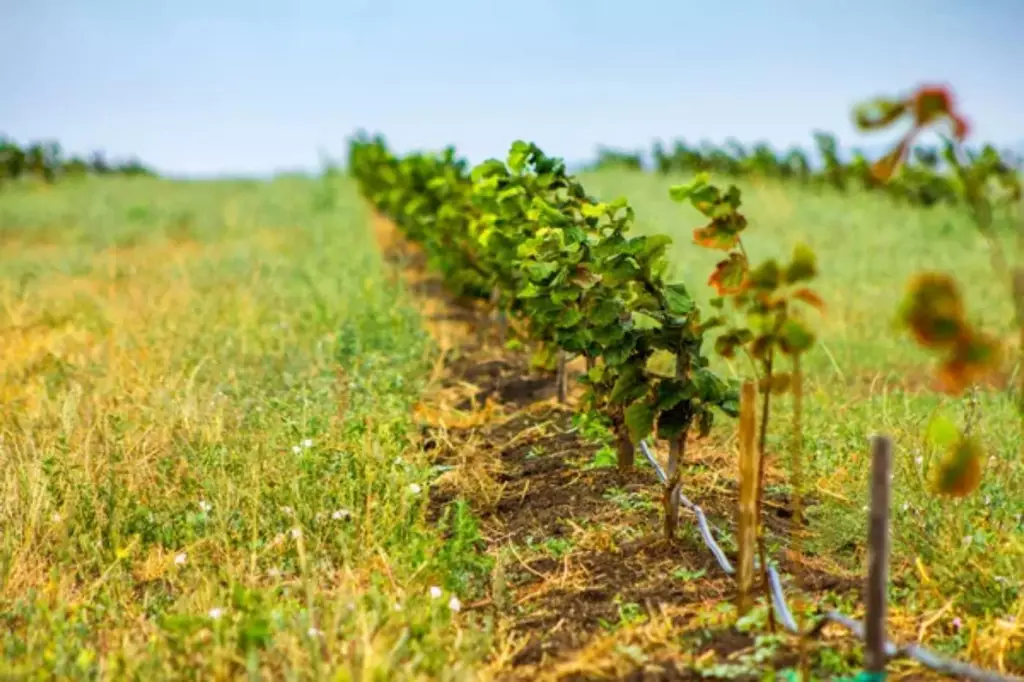
Secure your business with insurance
As a tree farmer, you need to protect your business with insurance. There are several types of insurance you may need, including liability insurance, property insurance, and crop insurance.
Liability insurance can protect you if someone is injured on your property or if you damage someone else's property. Property insurance can protect your farm buildings and equipment from damage or theft. Crop insurance can protect your trees from damage caused by weather, pests, or disease.
One way to protect your personal assets from business liabilities is to form a Limited Liability Company (LLC). An LLC is a legal entity that separates your personal assets from your business assets. This can provide an extra layer of protection for your business.
7. Effectively plan your financials
Starting a tree farm business with little to no money requires careful financial planning and budgeting. In this section, we'll explore some tips and strategies to help you manage expenses and explore funding options.
How to budget and manage expenses
Before you start your tree farm business, you might want to create a budget and identify your startup costs. This will help you understand how much money you need to get started and how much you can afford to spend on different expenses. Some of the expenses you may need to consider include:
- Land acquisition or leasing costs
- Seedling or sapling costs
- Equipment and machinery costs
- Labor costs
- Marketing and advertising costs
Once you've identified your expenses, you can start looking for ways to manage them. Some tips for managing expenses include:
- Buying used equipment instead of new equipment
- Negotiating with suppliers to get better prices
- Using social media and other free marketing channels to promote your business
- Hiring part-time or seasonal workers instead of full-time workers
Explore funding and loan options
If you don't have enough money to start your tree farm business, there are several funding and loan options you can explore. Some of the options include:
- Crowdfunding: Crowdfunding platforms like Kickstarter and Indiegogo can help you raise money from a large number of people.
- Grants: There are several grants available for small businesses and farmers. You can explore grants offered by the government or private organizations.
- Bank loans: You can apply for a bank loan to finance your tree farm business. However, you may need to have a good credit score and collateral to get approved.
- Microloans: Microloans are small loans offered by nonprofit organizations. These loans are easier to get approved for and can be a good option if you have a low credit score.
Before you choose a funding or loan option, make sure you understand the terms and conditions. Some loans may have high interest rates or require you to provide collateral. You should also make sure you can afford to pay back the loan on time.
8. Acquire essential equipment and resources
Starting a tree farm with no money requires a lot of creativity and resourcefulness. You will need to acquire the necessary equipment and resources to get your tree farm up and running.

Here are the steps you need to take to acquire the essential equipment and resources:
Obtain the basic tools and machinery needed
To start a tree farm, you will need some basic tools and machinery. These include a chainsaw, plow, auger, and tractor. You can either purchase these items or rent them from a local equipment rental company.
If you're on a tight budget, you may want to consider borrowing or renting the tools and machinery from a friend or family member.
Source seedlings and other materials
Seedlings are the foundation of your tree farm, so you need to source them from a reputable nursery. You can also consider growing your own seedlings, but this can be time-consuming and requires a lot of patience.
In addition to seedlings, you will need other materials such as fertilizer and mulch. You can purchase these items from a local garden center or hardware store.
When sourcing your materials, try to compare prices and quality. Look for deals and discounts to save money. You can also consider joining a local gardening or farming group to get advice and tips from experienced growers.
Invest in quality irrigation
Irrigation is essential for the health of your trees. You will need to invest in a quality irrigation system to ensure that your trees get the water they need to grow.
This may include drip irrigation, sprinklers, or other types of irrigation systems. You can often find used irrigation equipment for sale at a discount, or you can invest in new equipment if you have the budget.
While it may be tempting to go for the cheapest option, investing in quality equipment will save you money in the long run.
You'll also want to make sure you have the right equipment for the job. For example, a tractor with a plow attachment can be a valuable investment for preparing your land for planting.
9. Implement effective farm management practices
Below are some tips to help you manage your tree farm:
Practice proper irrigation and regular maintenance
Proper irrigation and maintenance of your tree farm are crucial for its growth and productivity. You need to ensure that your trees are getting enough water and nutrients to thrive. You can use drip irrigation or sprinkler systems to water your trees efficiently.
In addition to irrigation, you should also develop a comprehensive maintenance plan for your tree farm. This plan should include regular pruning, fertilization, and pest control. By keeping your trees healthy and well-maintained, you can maximize their productivity and profitability.
Deal with pests and weeds efficiently
Pests and weeds can pose a significant threat to your tree farm. To prevent these problems, you should implement effective pest and weed control strategies.
You can use natural or chemical methods to control pests and weeds, depending on your personal preferences and the specific needs of your tree farm.
There are several software programs available that can help you manage your pest and weed control efforts. These programs can help you identify potential problems, track your progress, and make informed decisions about how to manage your tree farm effectively.
10. Make a good marketing strategy
Starting a tree farm business is one thing, but selling your trees is another. You need to have a solid marketing and sales strategy in place to ensure that your business is profitable.
In this section, we will discuss two key aspects of marketing and sales: building a brand and online presence, and pricing and selling your trees.
Build a brand and online presence
You want to create a brand that customers can trust and rely on. One way to build your brand is by creating an online presence. This can include a website, social media accounts, and online directories.
Make sure your website is easy to navigate and showcases your products and services. You can use social media to engage with your customers and share updates about your business. Online directories like Google My Business and Yelp can also help you reach new customers in your area.
Another way to build your brand is by creating a logo and using it on all of your marketing materials. This can include business cards, flyers, and signage. Your logo should be simple, memorable, and reflect the values of your business.
Set competitive prices and sell your trees
When it comes to pricing your trees, you need to know the market demand in your area. Try to do some research to find out what other tree farms are charging for their trees.
You might also need to consider the cost of production, including labor, equipment, and supplies. Finally, you need to factor in your profit margin.
Once you have determined your pricing strategy, you need to decide how to sell your trees. You can sell your trees directly to customers at your farm or at a local farmers market.
You can also sell your trees wholesale to retailers or landscapers. Make sure to build relationships with your customers and network with other businesses in your area to increase your sales.
11. Upscale Your Tree Farm Business
Once your Christmas tree farm business is up and running, it's time to start thinking about scaling it up for expansion and diversification. Here are a few things you should consider to take your business to the next level:
Plan for expansion and diversification
To grow your business, you need to have a clear plan for expansion and diversification. This means identifying new opportunities in the industry, such as selling wreaths or other holiday decorations or branching out into other types of trees or crops.
You should also think about ways to increase your production capacity, such as adding new equipment or hiring more staff.
One way to plan for expansion is by creating a business plan that outlines your goals and objectives. This plan should include a detailed analysis of your current operations, as well as projections for future growth.
It should also outline the steps you need to take to achieve your goals, such as securing financing or hiring new staff.
Hire and train staff
As your business grows, you'll need to hire new staff to help you manage your operations. This means finding people with the right skills and experience to help you achieve your goals.
You should also invest in training and development programs to help your staff grow and develop their skills over time.
When hiring new staff, you may want to consider their experience and qualifications. Look for people who have experience working in the industry, or who have relevant skills and qualifications.
You should also consider their personality and work ethic, as these factors can be just as important as their technical skills.
To ensure that your staff are well-trained and able to perform their jobs effectively, you should invest in training and development programs.
This might include on-the-job training, mentoring, or formal training programs. By investing in your staff, you can help them grow and develop their skills, which can in turn help your business grow and succeed.


